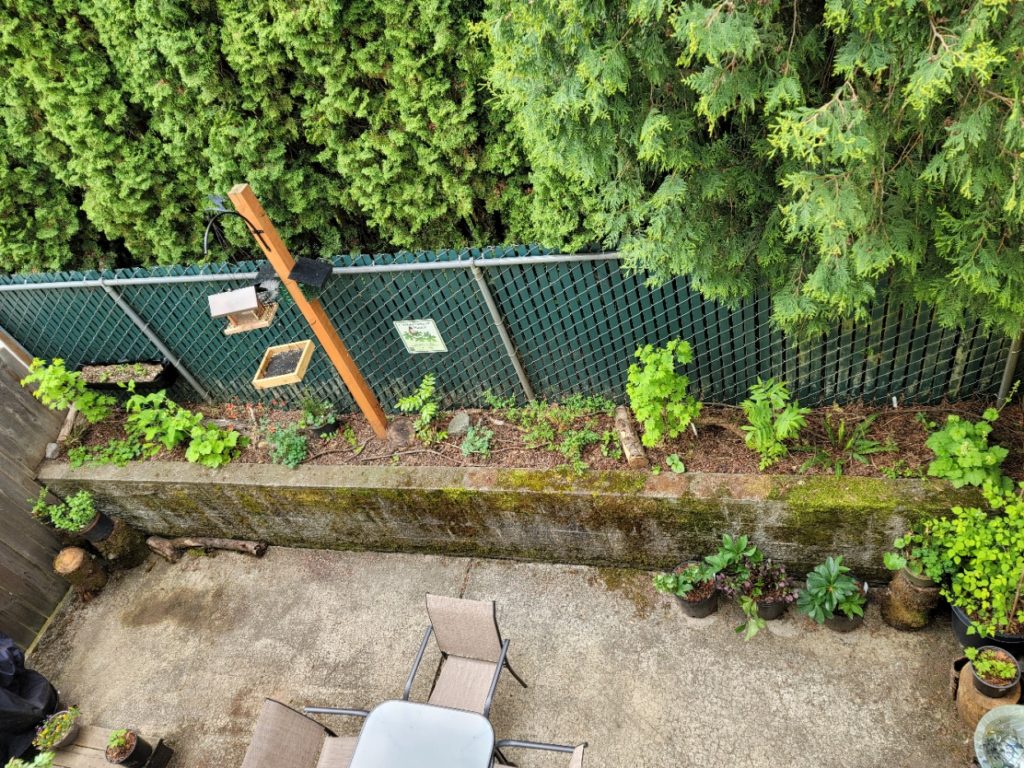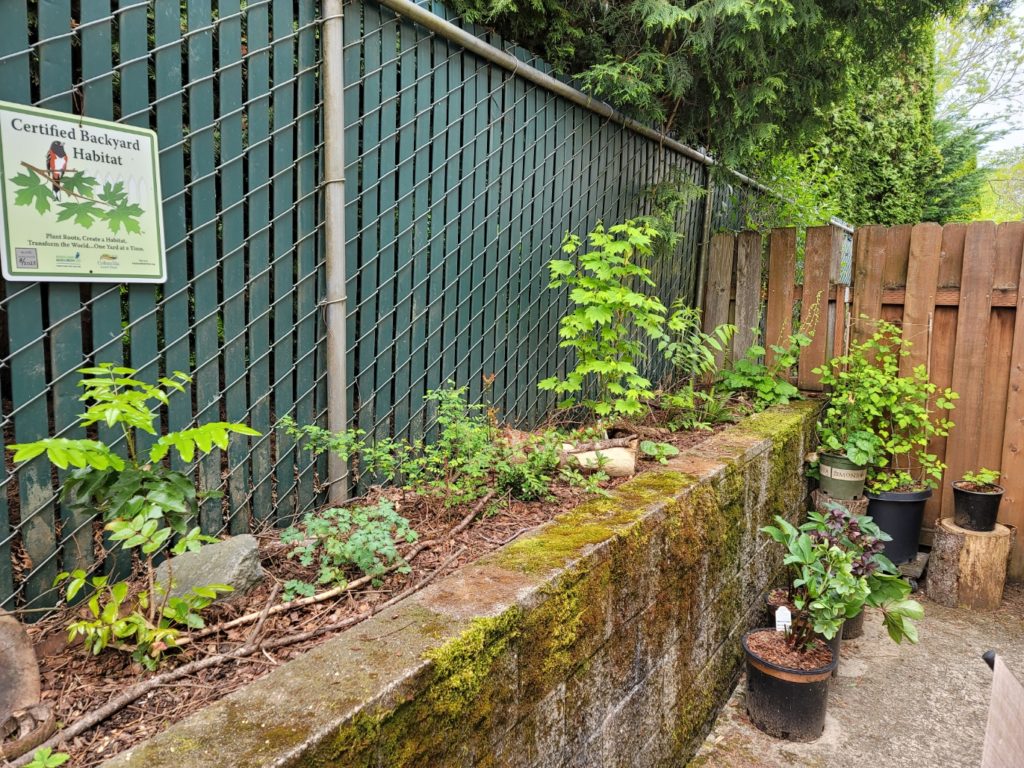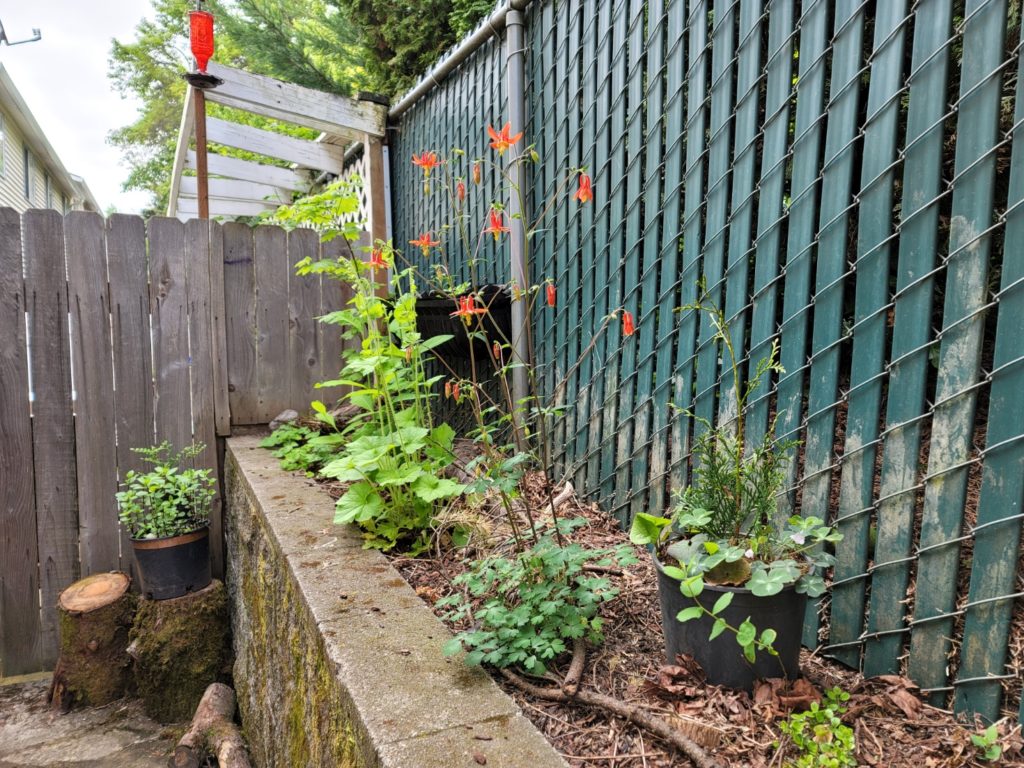Site Information: Helen’s habitat in Vancouver has part sun to shade and moist soil conditions. Located in a condominium, Helen has transformed the 2×20 foot raised bed (her plantable area) next to her condo’s patio into a backyard habitat, highlighting how small spaces can still support habitat!
What inspired you to enroll in the Backyard Habitat Certification Program?
I wanted to make every effort to support native pollinators and other wildlife, even on my tiny, urban patio!
How would you describe your habitat?
My backyard is really just a glorified patio of a condominium complex. It backs up to a steep slope and there is a very tall privacy hedge, which makes for year-round shady and moist conditions. I took that as an opportunity to recreate a forest floor in my backyard, complete with native groundcover and understory shrubs. The only soil I have is a tiny, 2×20 foot raised bed created by a cinderblock wall. The rest of my plants are in containers. I have a couple bird feeders, a bird bath, and decaying logs and branches. My yard is completely chemical-free!
What are your top three favorite native plants and why do you love them?
Bunchberry, starflower, twinflower. I love delicate groundcovers! I am intrigued and fascinated by the subtle beauty of their tiny flowers, often overlooked or trampled underfoot.
What changes have you observed as a result of creating habitat?
Pollinators hang out in my yard! And lots of birds. I now have underground critter activity (which is a blessing and a curse).
What were the two most significant challenges you encountered while creating habitat, and how did you address them?
One challenge is slugs and other decomposers chomping on my native plants. I haven’t really been able to fix this, except provide a few more plants so that hopefully some can survive. I also allow some common garden weeds to stick around, because the decomposers end up munching on them and reduce pressure on my native plants. The second biggest challenge is the tunneling activity of moles and voles. They end up uprooting many of my delicate native plants, which results in my daily tapping down of the lifted soil in hopes that I might help most of my plants survive.

What resources did you find especially helpful?
Real Gardens Grow Natives is my favorite book on this subject! The resources provided by the Backyard Habitat Certification Program have also been helpful.
How do you enjoy your Backyard Habitat throughout the different seasons? What are its highlights in each season?
As a new backyard habitat-er, I made the mistake of including very few evergreens, which makes my yard very bleak in the winter. But throughout the rest of the year, I have plants that bloom in different seasons, which makes for 3 seasons of color in my yard.
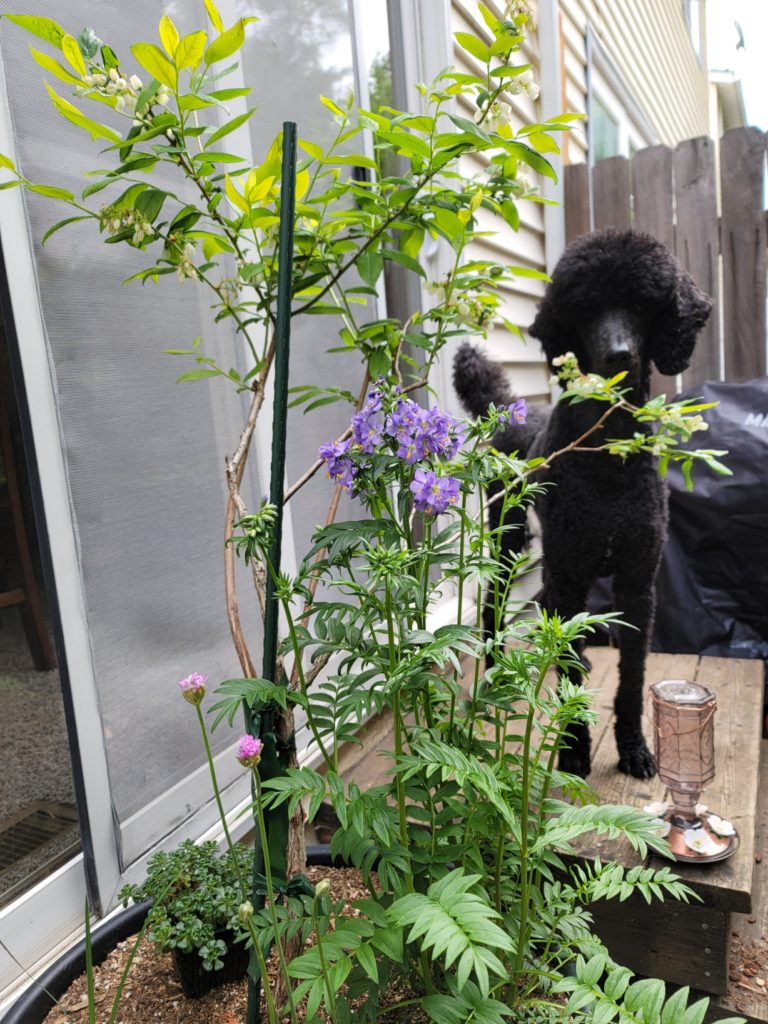
What part of your backyard habitat are you most proud of?
The tiny 2×20 ft raised garden bed. I am happy to see hummingbirds feed on the red-columbine and sparrows forage on the ground among the groundcovers and shrubs. I am also happy to see that most of my plants are flourishing- I haven’t killed any!
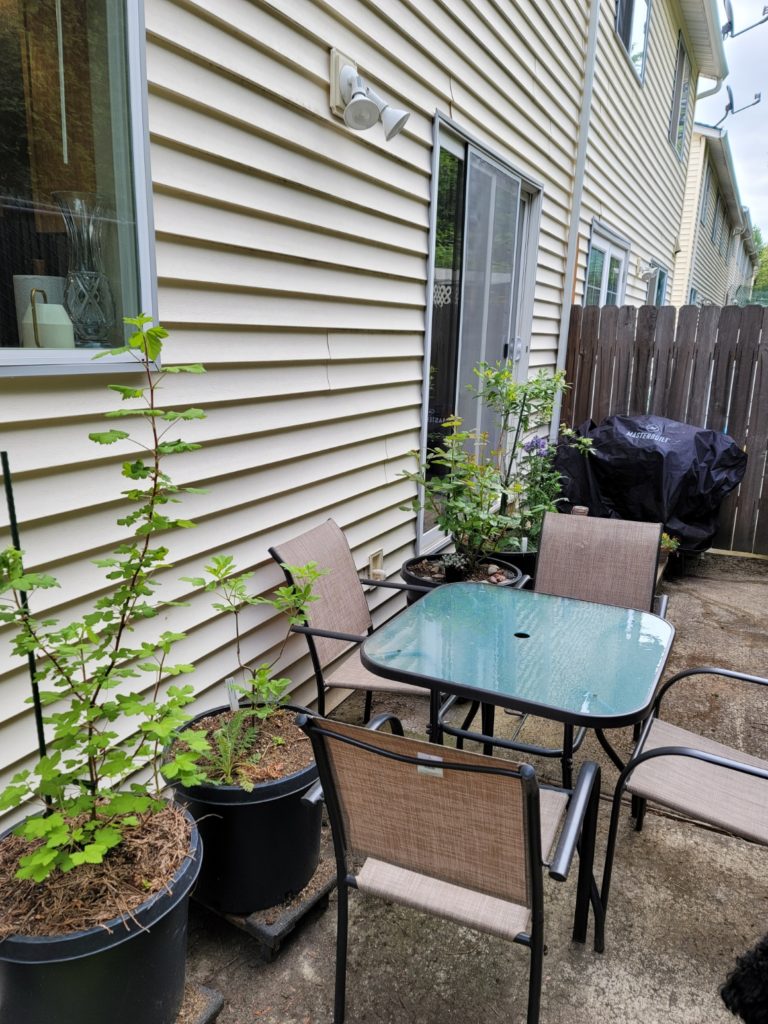
Is there anything else you’d like to add about your journey?
I am looking forward to watching my backyard habitat establish and fill in. The plants are still very young and small. I don’t know how many will survive the tunneling underground critters, as well as the leaf-munching aboveground critters. After all this work, sometimes I find it difficult to share my backyard habitat with the wildlife it was meant to support. It will be an ongoing journey for me. Now that my backyard is filled, I would like to expand my habitat to my front balcony and driveway garden bed!
